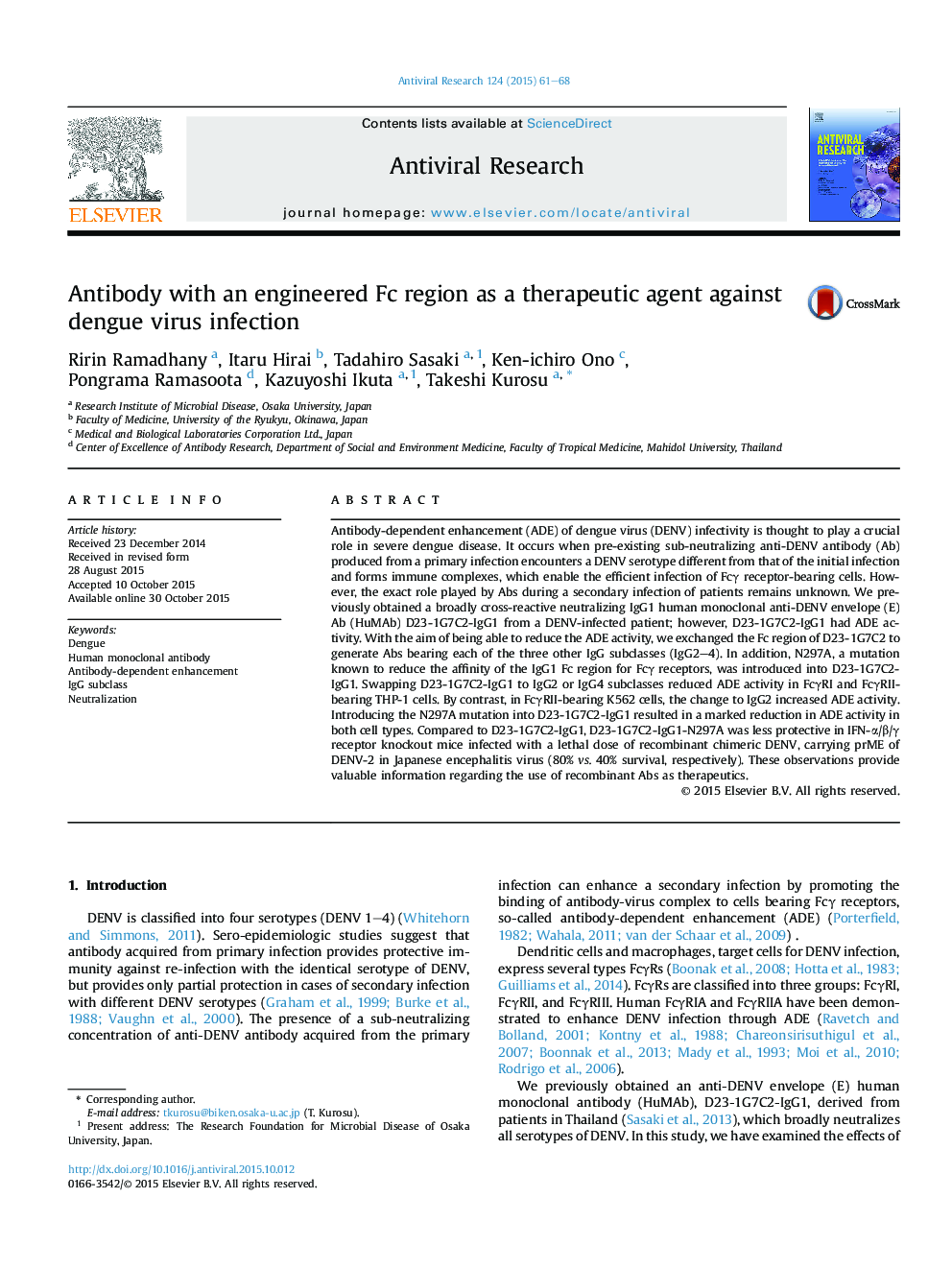| Article ID | Journal | Published Year | Pages | File Type |
|---|---|---|---|---|
| 5821866 | Antiviral Research | 2015 | 8 Pages |
â¢Difference in IgG subclass of anti-dengue virus E Ab does not affect neutralizing activity.â¢Difference in IgG subclass of anti-dengue virus E Ab affects ADE activity.â¢Effect of IgG subclass of anti-dengue virus envelop antibody is described.â¢N297A mutation of IgG reduced ADE activity in cultured cells without reducing neutralizing activity.â¢N297A mutation of IgG decreases stability and its protective effect in mice.
Antibody-dependent enhancement (ADE) of dengue virus (DENV) infectivity is thought to play a crucial role in severe dengue disease. It occurs when pre-existing sub-neutralizing anti-DENV antibody (Ab) produced from a primary infection encounters a DENV serotype different from that of the initial infection and forms immune complexes, which enable the efficient infection of Fcγ receptor-bearing cells. However, the exact role played by Abs during a secondary infection of patients remains unknown. We previously obtained a broadly cross-reactive neutralizing IgG1 human monoclonal anti-DENV envelope (E) Ab (HuMAb) D23-1G7C2-IgG1 from a DENV-infected patient; however, D23-1G7C2-IgG1 had ADE activity. With the aim of being able to reduce the ADE activity, we exchanged the Fc region of D23-1G7C2 to generate Abs bearing each of the three other IgG subclasses (IgG2-4). In addition, N297A, a mutation known to reduce the affinity of the IgG1 Fc region for Fcγ receptors, was introduced into D23-1G7C2-IgG1. Swapping D23-1G7C2-IgG1 to IgG2 or IgG4 subclasses reduced ADE activity in FcγRI and FcγRII-bearing THP-1 cells. By contrast, in FcγRII-bearing K562 cells, the change to IgG2 increased ADE activity. Introducing the N297A mutation into D23-1G7C2-IgG1 resulted in a marked reduction in ADE activity in both cell types. Compared to D23-1G7C2-IgG1, D23-1G7C2-IgG1-N297A was less protective in IFN-α/β/γ receptor knockout mice infected with a lethal dose of recombinant chimeric DENV, carrying prME of DENV-2 in Japanese encephalitis virus (80% vs. 40% survival, respectively). These observations provide valuable information regarding the use of recombinant Abs as therapeutics.
